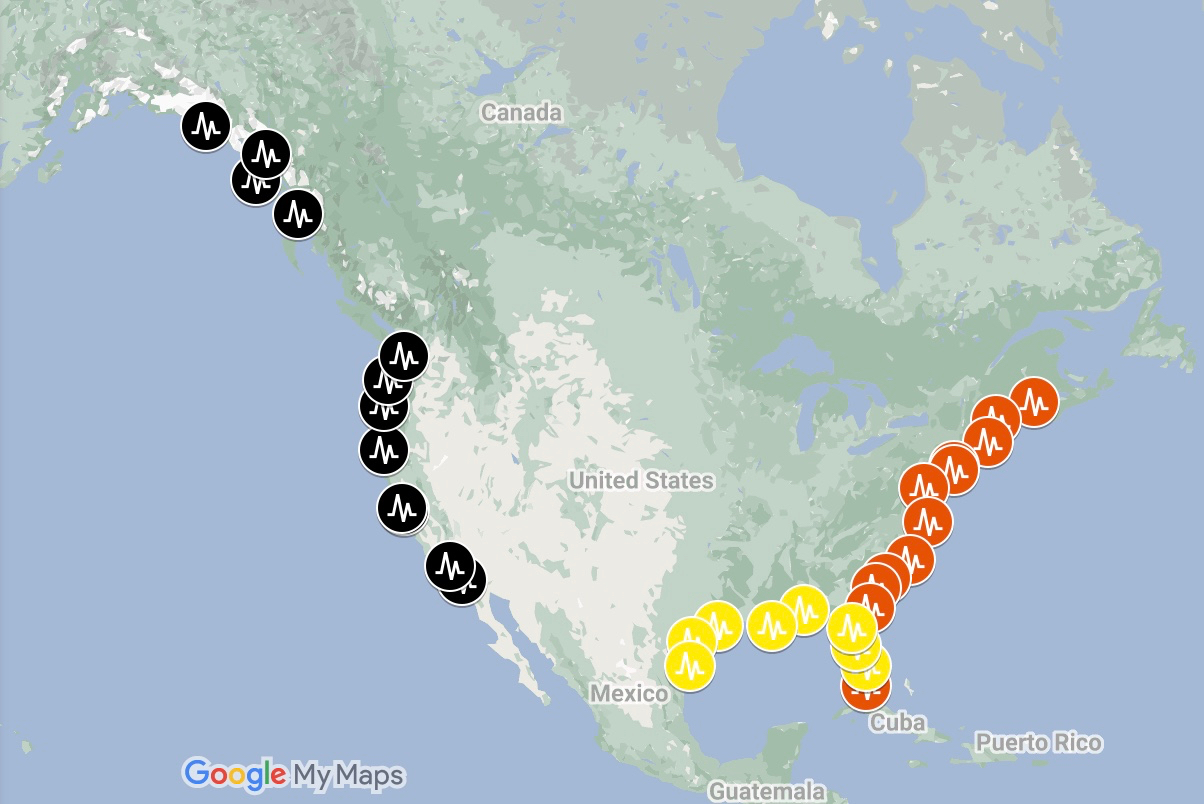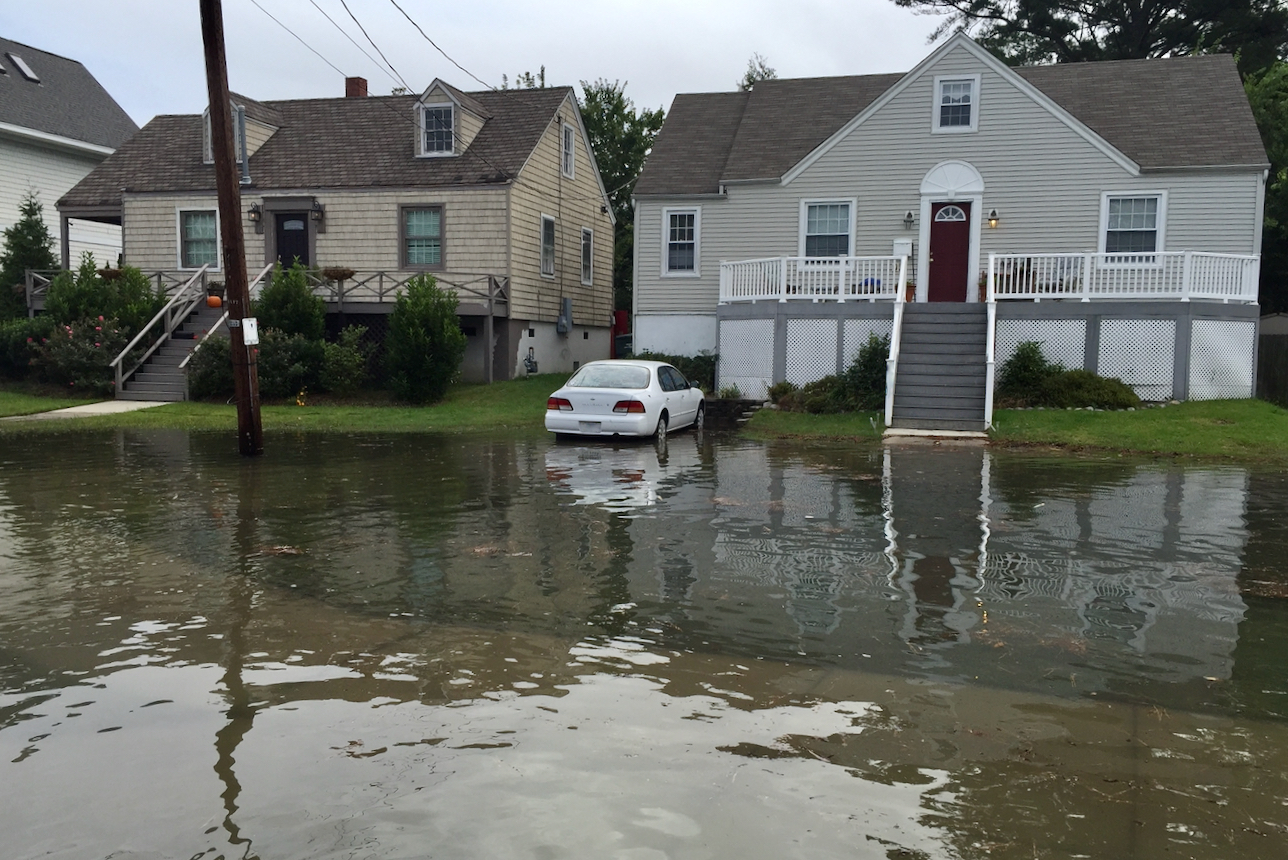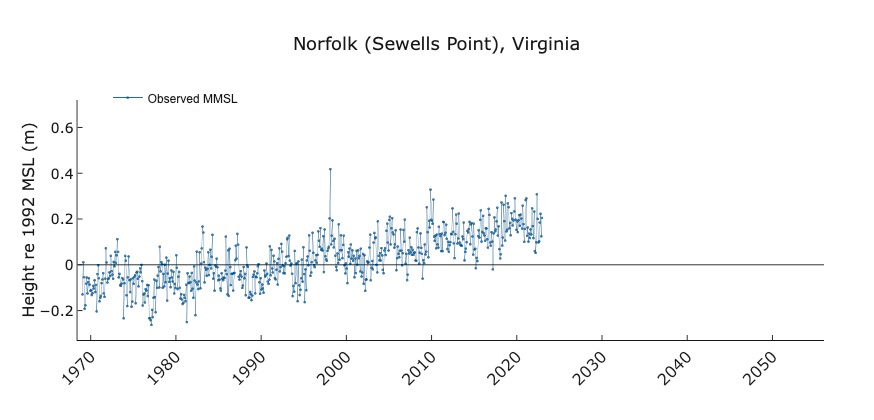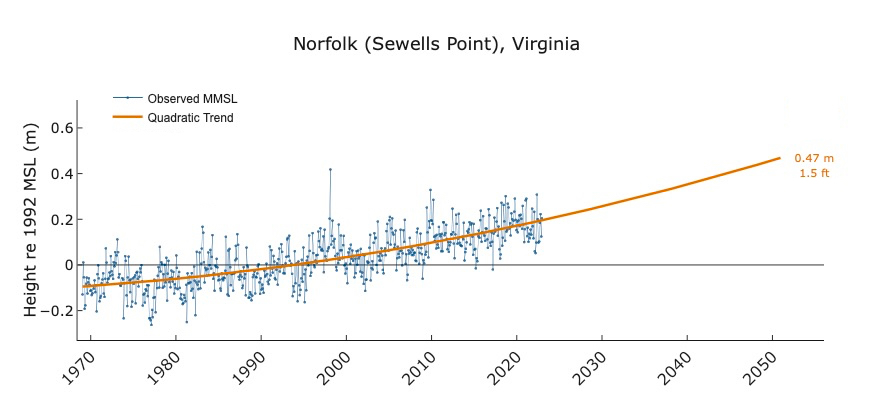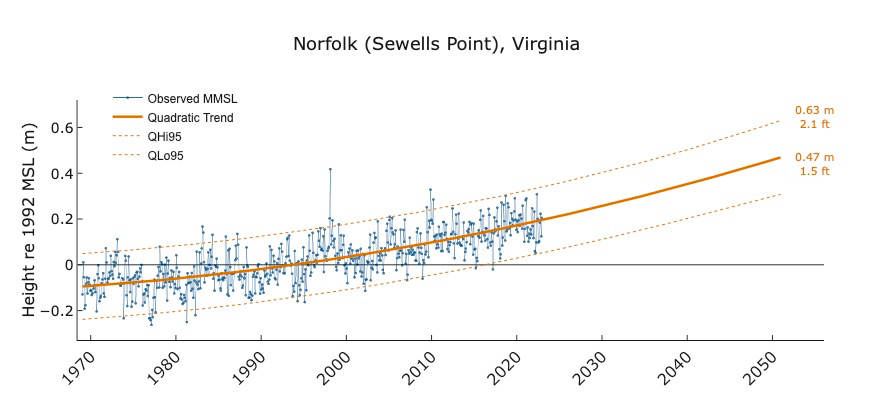U.S. sea-level report cards: 2022 once again trends toward acceleration
Want to know how sea level in your area is changing due to global warming and other factors? Sea level “report cards” from William & Mary’s Virginia Institute of Marine Science forecast sea level to the year 2050 based on an annual analysis of tide-gauge records for 32 localities along the U.S. coast. The analysis now includes 54 years of water-level observations, from 1969 through 2022. Scroll down to discover this year's highlights and learn why our report cards provide maximum value to coastal residents, businesses, and governments. Then visit our interactive charts, which are available online at www.vims.edu/sealevelreportcards.

